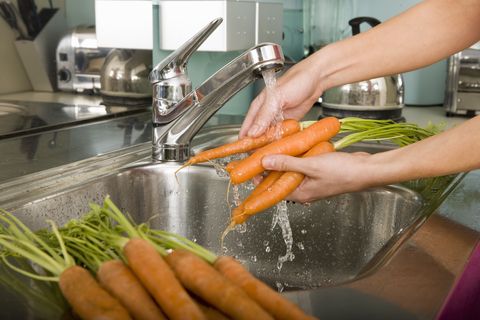Here's a detailed, easy to use guide for food storage. Enjoy!
Thanks to the Love Food; Hate Waste website.
Helpful tips and inspiration for living gently on our planet.
Thanks to the Love Food; Hate Waste website.

I came a cross this concise and useful article featuring tips for washing vegetables. It was originally published on the Country Living site and was written by Christopher Michel. Here are highlights from his post:
To read the full article (which also covers the best way to actually wash berries, CLICK HERE